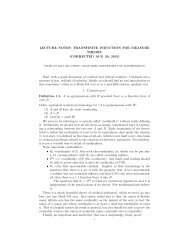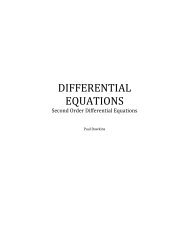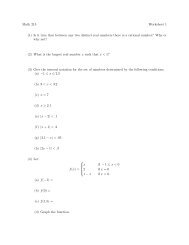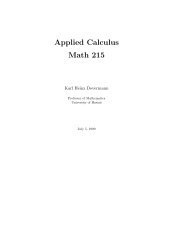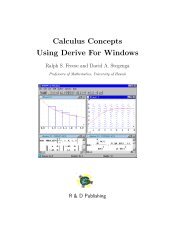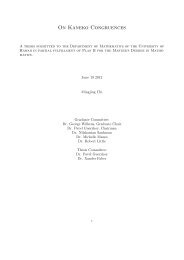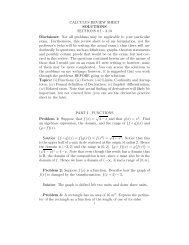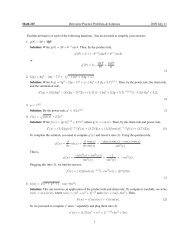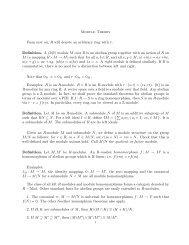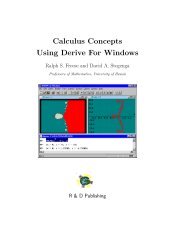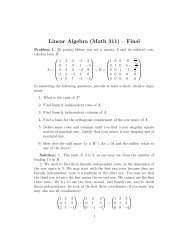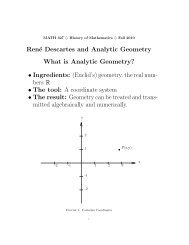Problems and Solutions in - Mathematics - University of Hawaii
Problems and Solutions in - Mathematics - University of Hawaii
Problems and Solutions in - Mathematics - University of Hawaii
You also want an ePaper? Increase the reach of your titles
YUMPU automatically turns print PDFs into web optimized ePapers that Google loves.
1.5 2001 November 26 1 REAL ANALYSIS<br />
Now, by def<strong>in</strong>ition, Tnx → T x, for all x ∈ X <strong>and</strong>, s<strong>in</strong>ce the norm · Y is uniformly cont<strong>in</strong>uous, 27<br />
TnxY → T xY (∀x ∈ X). (17)<br />
Taken together, (16) <strong>and</strong> (17) imply T xY ≤ (c + 1)xX, for all x ∈ X. Therefore, T is bounded.<br />
• limn→∞ Tn − T = 0:<br />
Fix ɛ > 0 <strong>and</strong> choose N ∈ N such that n, m ≥ N implies Tn − Tm < ɛ. Then,<br />
Tnx − Tmx ≤ Tn − TmxX < ɛxX<br />
holds for all n, m ≥ N, <strong>and</strong> x ∈ X. Lett<strong>in</strong>g m go to <strong>in</strong>f<strong>in</strong>ity, then,<br />
Tnx − T x = lim<br />
m→∞ Tnx − Tmx ≤ ɛxX.<br />
That is, Tnx − T x ≤ ɛxX, for all n ≥ N <strong>and</strong> x ∈ X. Whence, Tn − T ≤ ɛ for all n ≥ N.<br />
27 Pro<strong>of</strong>: | aY − bY | ≤ a − bY (∀a, b ∈ Y ).<br />
26<br />
⊓⊔




